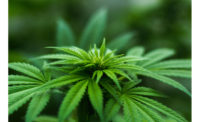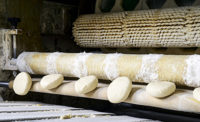Study: Industry lags consumer demand for CBD products
Consumer awareness of and interest in using CBD products shows no signs of slowing down.

Rapidly changing consumer attitudes toward hemp-derived CBD-based products continue to drive consumer demand and market growth conservatively expected to reach $24 billion in North America by 2023. But, many retailers and manufacturers are still playing catch-up to that demand, putting in play billions of dollars in sales, according “2019 CBD Market Survey,” a study produced by A.T. Kearney, Chicago.
A.T. Kearney polled consumers who had an awareness of cannabis or Cannabidiol (CBD).
“The survey is part of our ongoing efforts to track consumer acceptance of both hemp-derived CBD and marijuana as laws and regulations evolve. We want to understand the obstacles blocking broader acceptance and their impact on sales. We believe that, if they really want to be successful in this market, consumer goods companies and retailers have to get actively involved in consumer education while establishing a reputation as sources of accurate, fact-based, information," says Bryson Waterman, principal.
Four major themes emerged from the survey:
- Consumer awareness of and interest in using CBD products shows no signs of slowing down. Nearly 68% of respondents have used or know someone who has tried CBD, while 73% report having had positive experiences and intend to use it again – conservatively representing a potential 200 million-member North American consumer market.
- A significant CBD information gap still exists. While 72% of respondents believe CBD provides wellness and therapeutic benefits, only 29% felt well informed on its uses. Respondents overwhelmingly reported turning to the Internet (63%) or word of mouth (49%) for information on CBD.
- CBD-based items are becoming a significant part of daily wellness routines, both as replacements for and/or additions to existing products. More than half (57%) of respondents signaled that they are turning to CBD as a substitute for existing products; 56% have already replaced wellness products with CBD; and 44% use CBD as a complement to other wellness products.
- Finally, before they can gain full advantage of a CBD market value estimated to reach $24 billion by 2023, branders and retailers need to take a more aggressive role in consumer education, use integrated merchandising strategies to position CBD as a destination category and mandate supply chain transparency to drive trust and guarantee quality.
“It is exciting to see the emergence of a new industry. The challenge for large consumer companies is to react quickly enough to capture consumers during the fast-growth phase. By waiting too long for the trend to prove out, incumbent players risk buying into a market where the growth has started to slow,” says Greg Portell, global head of the consumer and retail practice. “Like any new industry from organic foods to eco-friendly fashion, it’s critical that we listen to consumers and don’t take too long to show we hear what they are asking for.”
About the study
A.T. Kearney surveyed 1,000 U.S. and 1,000 Canadian consumers from various demographic and economic backgrounds who had an awareness of the term cannabis or Cannabidiol (CBD). The 2-part survey aimed to gauge consumer sentiments on hemp-derived CBD, which is now fully legal in both countries and has no psychoactive properties, and surveyed attitudes toward marijuana-based cannabis products that contain both CBD and THC.
Looking for a reprint of this article?
From high-res PDFs to custom plaques, order your copy today!






